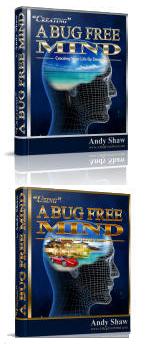This post continues from Part 1, looking at how some elements of the book, Psycho Cybernetics by Maxwell Maltz applies to martial arts.
The author, Maxwell Maltz, makes the compelling case that our brains act as a goal driven mechanism that works on negative feedback to achieve our desires. Now before people jump up in arms at the use of the phrase “negative feedback” when modern day political correctness and education tells that we should always be positive, bear with me while I explain.
If you’re driving a car down a completely straight road and you line the car up parallel with the road, sooner or later you’ll start getting nearer and nearer to the centre of the road or the curb, so you need to adjust the steering in order to keep going straight. This heading for the curb is the “negative feedback” telling you to make an adjustment to keep you going on the correct route without having an accident.
It is like a baby learning to walk. At first they keep falling down. Then they manage a few step and learn from it. The more they fall down (negative feedback) the more they learn to adjust their steps to prevent it happening again. Negative feedback in this sense is essential to tell us when we are going off from our true path or goal.
However, once the driver adjust the steering he/she does it automatically and forgets about the slight variance of their car’s path; just as the baby forgets about the falls once it has learnt to walk. So it is with all aspects of learning, including martial arts. Once we become adept at a technique (walking, driving, jumping spinning kick) we forget how we did it wrong. In fact the wrong way starts to feel un-natural to us.
Problems do set in however, (with any facet of life), when people start to focus on the negative feedback instead of the correction that it should indicate to them. Ever heard somebody say, “Oh I’ll never be able to do that”. They are focusing the negative feedback instead of using it to prompt them in the desired direction. When we have a goal in life, we should pursue it aggressively. I don’t mean knocking people out of your way to get there, but you should be very pro-active and determined in achieving your desired outcome.
This applies to every single aspect of your life, be it physical, spiritual, emotional, relationships, business, martial arts, whatever.
This is one of the strengths of traditional martial arts training, as it always teaches you to you strive for perfection of technique, gradual improving bit by bit taking you up in small bite size steps (grading syllabus). For any able bodied person who trains hard and regular, getting the coverted black belt is achievable. Many people who are not fully able bodied have achieved their black belt.
Now I know that many will say that the the belt does not really matter . . . and . . . well . . . they’re right. That said, it is a very significant and tangible symbol of success and achievement. Whether we train for combat, or sport, or just for the art; we train our minds to accept the negative feedback and to move forward.
In fairness, many endeavours can have a similar effect on the practitioner. Martial arts however do deal with facing up to violence. The fear of violence is one of our most hard-wired primal instincts. To quote a wise friend of mine, Dave Hayward:
Acts of violence are the single most terrifying thing that can happen to us or those we love. The type of training we partake in gives us the confidence and ability to deal with it. I believe this is what makes the martial arts holistic as we learn to deal with and conquer fear by dealing with the worst fear of all.
Martial arts are geared up (as David says) to conquer our worst and most primal fear. Furthermore, they are designed to overcome this most basic animal instinct within us in a methodical step by step manor (grades) which is designed to set us up for success.
Psycho Cybernetics also quotes from a published article by Prescott Lecky:
Lecky has said that the purpose of emotion is “re-inforcement”, or additional strength, rather that to serve as a sign of weakness. He believed that there was only one basic emotion - “excitement” - and that excitement manifests itself as fear, anger, courage, etc., depending upon our own inner goals at the time - whether we are inwardly organized to conquer a problem, run away from it, or destroy it. “The real problem is not to control emotion, but to control the choice of which tendency shall receive emotional reinforcement”.
This has an obvious relevance for us as martial artists. Whether in a competition, or (god forbid) you are assaulted by a real street predator, you will feel that excitement. It will usually be accompanied by adrenalin. We must train ourselves to use that excitement to re-enforce our courage and our determination to get away safely (whether by running or fighting). We mustn’t let this excitement overly re-enforce our feelings of fear and panic.
Maxwell Maltz relays an example of an old time boxer, Jack Dempsey, who apparently used to get so nervous before a fight that he couldn’t shave and couldn’t sit or stand still. However, Jack Dempsey did not interpret this nervousness as fear; instead he used it to fuel his blows in the match.
This is what we as martial artists must also do. Traditional martial arts do this by repeated exposure to somebody putting pressure on us at training, whether by free sparring or pre-arranged drills getting faster and more determined. Reality based training does of course accelerate this process (as per part 1).



